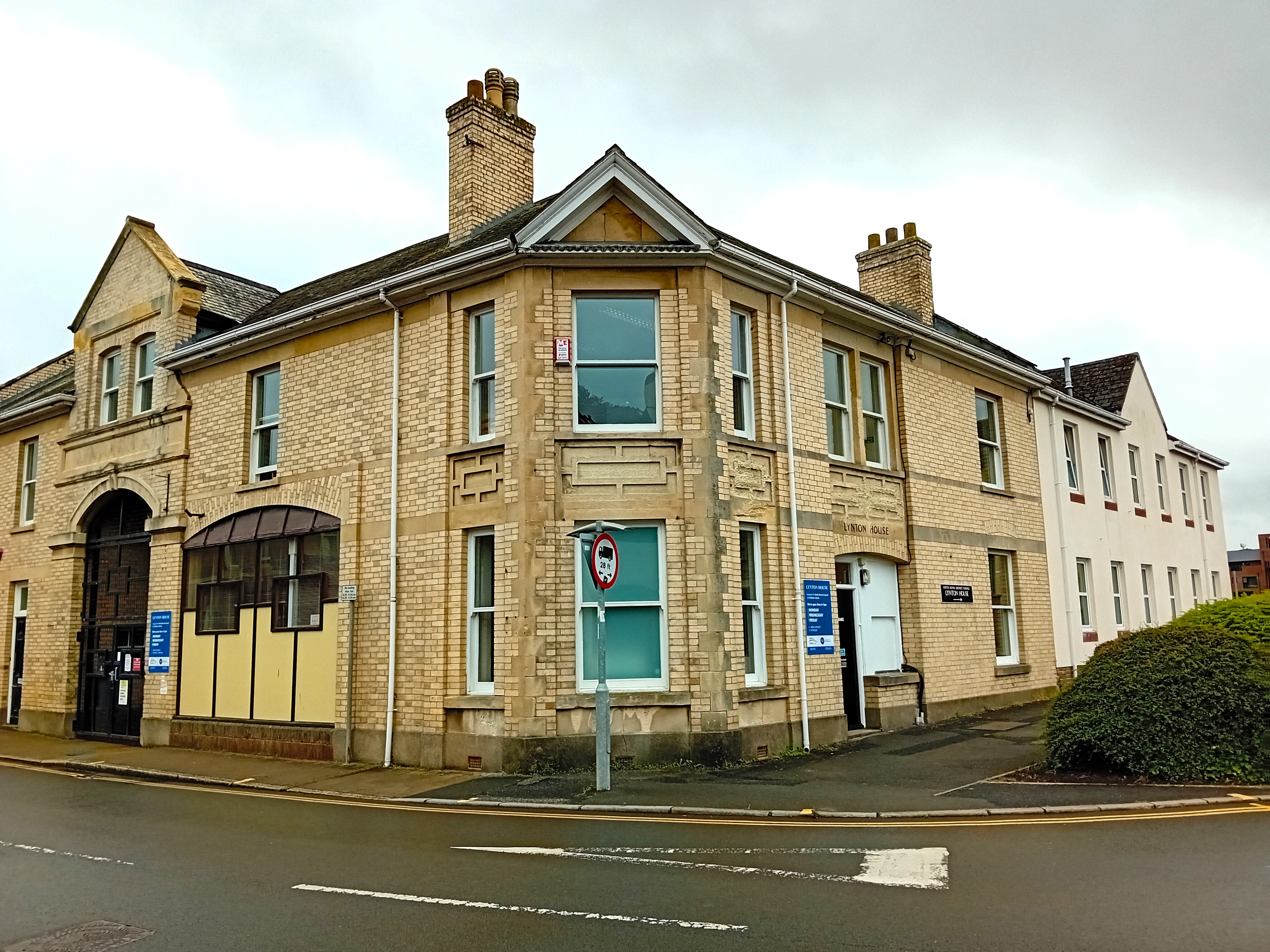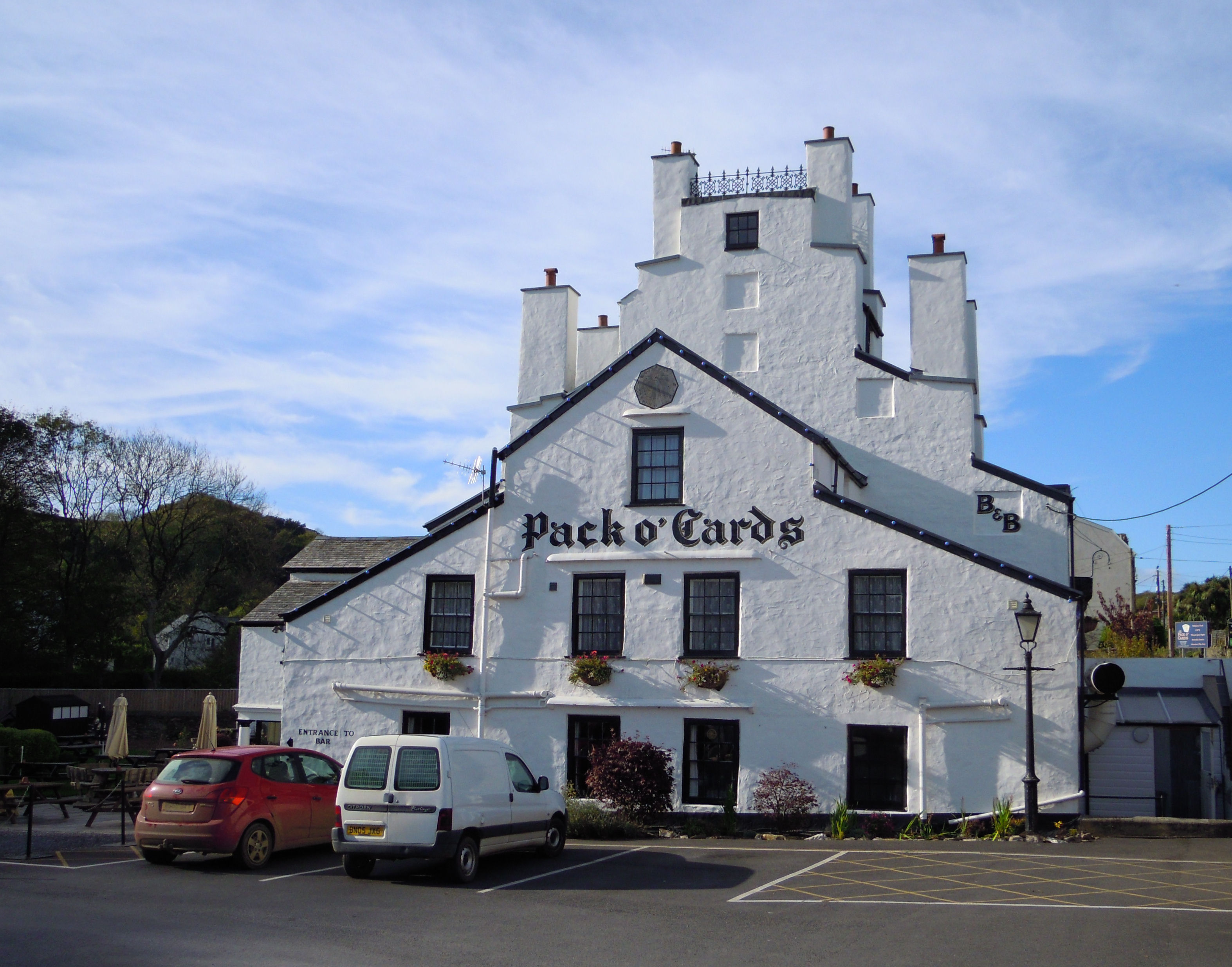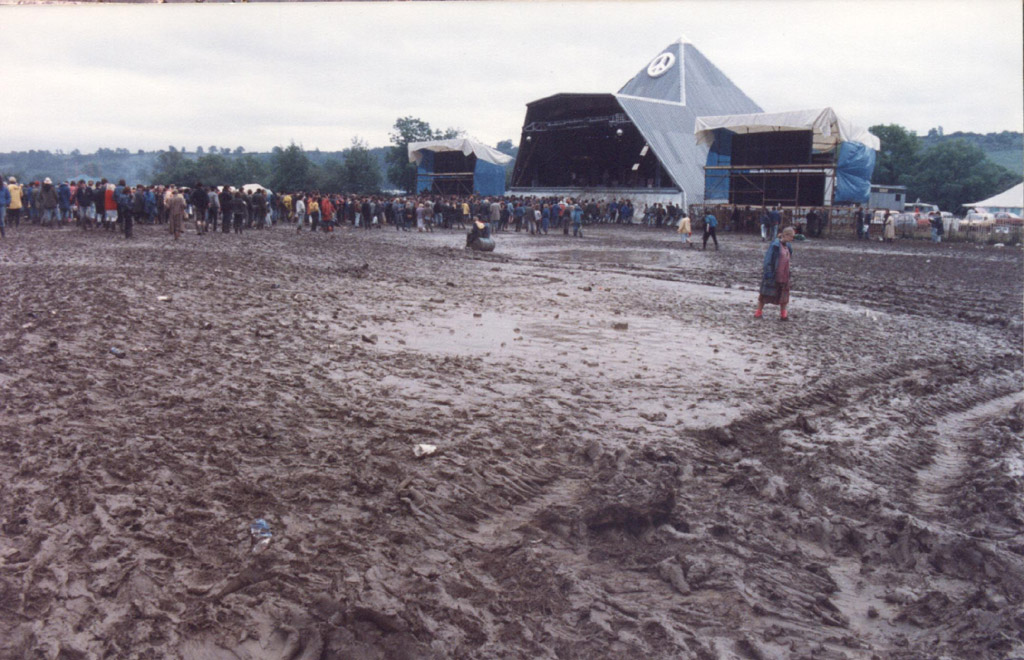|
Trentishoe
220px, The Trentishoe area on Donn's one inch to the mile survey of 1765. Trentishoe is a village and civil parish in North Devon, England. The parish lies on the coast of the Bristol Channel. The village is east of Combe Martin, at an elevation of 180 metres, separated from the coast by high cliffs. The village was mentioned in the Domesday Book as ''Trendesholt''. The name is of Old English origin, and appears to mean "hill-spur of a circular hill named Trendel". Parish church The small parish church is dedicated to St Peter. The church dates from the 15th century, and is a Grade II* listed building. It is in the Shirwell deanery of the Church of England. James Hannington James Hannington (3 September 1847 – 29 October 1885) was an English Anglican missionary and martyr. He was the first Anglican bishop of East Africa. Early life Hannington was born on 3 September 1847 at Hurstpierpoint in Sussex, Englan ..., a future saint and a martyr, took charge of the ... [...More Info...] [...Related Items...] OR: [Wikipedia] [Google] [Baidu] |
James Hannington
James Hannington (3 September 1847 – 29 October 1885) was an English Anglican missionary and martyr. He was the first Anglican bishop of East Africa. Early life Hannington was born on 3 September 1847 at Hurstpierpoint in Sussex, England, about eight miles from Brighton, where his father ran a warehouse, and was part of the family that ran Hanningtons department stores. His father, Charles Smith Hannington, had recently acquired the property known as St George's. During his childhood, Hannington was a collector and he blew off his thumb with black powder. For Hannington's early education a tutor had been engaged, but when he was thirteen he was sent to the Temple School at Brighton, where he remained for the next two-and-a-half years, although he was an indifferent student. Hannington left school at fifteen to work in his father's Brighton counting house. He obtained a commission in the 1st Sussex Artillery Volunteer Corps in 1864 and rose to the rank of major. Under ... [...More Info...] [...Related Items...] OR: [Wikipedia] [Google] [Baidu] |
Civil Parishes In Devon
This is a list of civil parishes in the ceremonial counties of England, ceremonial county of Devon, England. There are 426 civil parishes. East Devon Exeter The former County Borough of Exeter, Exeter County Borough is unparished. Mid Devon The whole of the district is parished. North Devon The whole of the district is parished. Plymouth The former County Borough of Plymouth, Plymouth County Borough is unparished. South Hams The whole of the district is parished. Teignbridge The whole of the district is parished. Torbay Part of the former County Borough of Torbay, Torbay County Borough is unparished. *Brixham (town) 40 Torridge District, Torridge Lundy is unparished West Devon The whole of the borough is parished. Notes See also * List of civil parishes in England References External links Office for National Statistics : Geographical Area Listings {{Devon Populated places in Devon, Civil parishes Lists of civil parishes in England, Devon Civil parish ... [...More Info...] [...Related Items...] OR: [Wikipedia] [Google] [Baidu] |
North Devon
North Devon is a Non-metropolitan district, local government district in Devon, England. Its council is based just outside Barnstaple, the district's largest town. The district also includes the towns of Ilfracombe, Lynton and Lynmouth and South Molton along with numerous villages, seaside resorts and surrounding rural areas. The east of the district includes part of the Exmoor National Park, and the district's coast is also recognised for its natural beauty, forming part of the North Devon Coast, an Area of Outstanding Natural Beauty. The district borders Torridge District, Torridge to the south-west, Mid Devon to the south-east, and the neighbouring county of Somerset to the east. The term "North Devon" can also be used to describe a wider geographic area than the local government district, often including neighbouring Torridge District, based in Bideford. History The district was formed on 1 April 1974 under the Local Government Act 1972. The new district covered the area ... [...More Info...] [...Related Items...] OR: [Wikipedia] [Google] [Baidu] |
Civil Parish
In England, a civil parish is a type of administrative parish used for local government. It is a territorial designation which is the lowest tier of local government. Civil parishes can trace their origin to the ancient system of parishes, which for centuries were the principal unit of secular and religious administration in most of England and Wales. Civil and religious parishes were formally split into two types in the 19th century and are now entirely separate. Civil parishes in their modern form came into being through the Local Government Act 1894 ( 56 & 57 Vict. c. 73), which established elected parish councils to take on the secular functions of the parish vestry. A civil parish can range in size from a sparsely populated rural area with fewer than a hundred inhabitants, to a large town with a population in excess of 100,000. This scope is similar to that of municipalities in continental Europe, such as the communes of France. However, unlike their continental Euro ... [...More Info...] [...Related Items...] OR: [Wikipedia] [Google] [Baidu] |
Bristol Channel
The Bristol Channel (, literal translation: "Severn Sea") is a major inlet in the island of Great Britain, separating South Wales (from Pembrokeshire to the Vale of Glamorgan) and South West England (from Devon to North Somerset). It extends from the smaller Severn Estuary of the River Severn () to the North Atlantic Ocean. It takes its name from the English city and port of Bristol. Long stretches of both sides of the coastline are designated as Heritage Coast. These include Exmoor, Bideford Bay, the Hartland Point peninsula, Lundy Island, Glamorgan, Gower Peninsula, Carmarthenshire, South Pembrokeshire and Caldey Island. Until Tudor times the Bristol Channel was known as the Severn Sea, and it is still known as this in both and . Geography The International Hydrographic Organization (IHO) defines the offshore western limit of the Bristol Channel as "a line joining Hartland Point in Devon () to St. Govan's Head in Pembrokeshire ()". Western and northern Pembrok ... [...More Info...] [...Related Items...] OR: [Wikipedia] [Google] [Baidu] |
Combe Martin
Combe Martin () is a village, Civil parishes in England, civil parish and former Manorialism, manor on the North Devon coast about east of Ilfracombe. It is a small seaside resort with a sheltered cove on the northwest edge of the Exmoor National Parks in England and Wales, National Park. Due to the narrowness of the valley, the village consists principally of one single long street which runs between the valley head and the sea. An electoral ward with the village name exists. The ward population at the United Kingdom Census 2011, 2011 census was 3,941. History Evidence of Iron Age occupation includes the nearby Newberry Castle fort. The Toponymy, toponym "Combe" is derived from Old English ''cumb'' meaning "wooded valley". It derives ultimately from the same Brittonic languages, Brythonic source as the Welsh cwm,Cornish ''kom'' also of the same meaning. The name was recorded as ''Comer'' in 1128. The 'Martin' suffix on the place name is from the name of the FitzMartin f ... [...More Info...] [...Related Items...] OR: [Wikipedia] [Google] [Baidu] |
Domesday Book
Domesday Book ( ; the Middle English spelling of "Doomsday Book") is a manuscript record of the Great Survey of much of England and parts of Wales completed in 1086 at the behest of William the Conqueror. The manuscript was originally known by the Latin name , meaning "Book of Winchester, Hampshire, Winchester", where it was originally kept in the royal treasury. The ''Anglo-Saxon Chronicle'' states that in 1085 the king sent his agents to survey every shire in England, to list his holdings and dues owed to him. Written in Medieval Latin, it was Scribal abbreviation, highly abbreviated and included some vernacular native terms without Latin equivalents. The survey's main purpose was to record the annual value of every piece of landed property to its lord, and the resources in land, labour force, and livestock from which the value derived. The name "Domesday Book" came into use in the 12th century. Richard FitzNeal wrote in the ( 1179) that the book was so called because its de ... [...More Info...] [...Related Items...] OR: [Wikipedia] [Google] [Baidu] |
Old English
Old English ( or , or ), or Anglo-Saxon, is the earliest recorded form of the English language, spoken in England and southern and eastern Scotland in the Early Middle Ages. It developed from the languages brought to Great Britain by Anglo-Saxon settlers in the mid-5th century, and the first Old English literature dates from the mid-7th century. After the Norman Conquest of 1066, English was replaced for several centuries by Anglo-Norman language, Anglo-Norman (a langues d'oïl, type of French) as the language of the upper classes. This is regarded as marking the end of the Old English era, since during the subsequent period the English language was heavily influenced by Anglo-Norman, developing into what is now known as Middle English in England and Early Scots in Scotland. Old English developed from a set of Anglo-Frisian or Ingvaeonic dialects originally spoken by Germanic tribes traditionally known as the Angles (tribe), Angles, Saxons and Jutes. As the Germanic settlers ... [...More Info...] [...Related Items...] OR: [Wikipedia] [Google] [Baidu] |
Grade II* Listed Building
In the United Kingdom, a listed building is a structure of particular architectural or historic interest deserving of special protection. Such buildings are placed on one of the four statutory lists maintained by Historic England in England, Historic Environment Scotland in Scotland, in Wales, and the Historic Environment Division of the Department for Communities in Northern Ireland. The classification schemes differ between England and Wales, Scotland, and Northern Ireland (see sections below). The term has also been used in the Republic of Ireland, where buildings are protected under the Planning and Development Act 2000, although the statutory term in Ireland is "Record of Protected Structures, protected structure". A listed building may not be demolished, extended, or altered without permission from the local planning authority, which typically consults the relevant central government agency. In England and Wales, a national amenity society must be notified of any work to ... [...More Info...] [...Related Items...] OR: [Wikipedia] [Google] [Baidu] |
Church Of England
The Church of England (C of E) is the State religion#State churches, established List of Christian denominations, Christian church in England and the Crown Dependencies. It is the mother church of the Anglicanism, Anglican Christian tradition, tradition, with foundational doctrines being contained in the ''Thirty-nine Articles'' and ''The Books of Homilies''. The Church traces its history to the Christian hierarchy recorded as existing in the Roman Britain, Roman province of Britain by the 3rd century and to the 6th-century Gregorian mission to Kingdom of Kent, Kent led by Augustine of Canterbury. Its members are called ''Anglicans''. In 1534, the Church of England renounced the authority of the Papacy under the direction of Henry VIII, beginning the English Reformation. The guiding theologian that shaped Anglican doctrine was the Reformer Thomas Cranmer, who developed the Church of England's liturgical text, the ''Book of Common Prayer''. Papal authority was Second Statute of ... [...More Info...] [...Related Items...] OR: [Wikipedia] [Google] [Baidu] |
Glastonbury Festival
The Glastonbury Festival of Contemporary Performing Arts (commonly referred to as simply Glastonbury Festival, known colloquially as Glasto) is a five-day festival of contemporary performing arts held near Pilton, Somerset, England, in most summers. In addition to contemporary music, the festival hosts dance, comedy, theatre, circus, cabaret, and other arts. Leading pop and rock artists have headlined, alongside thousands of others appearing on smaller stages and performance areas. Films and albums have been recorded at the festival, and it receives extensive television and newspaper coverage. Glastonbury takes place on 1500 acres of farmland and is attended by around 200,000 people, requiring extensive security, transport, water, and electricity-supply infrastructure. While the number of attendees is sometimes swollen by Gate crashing, gatecrashers, a record of 300,000 people was set at the 1994 festival, headlined by the Levellers (band), Levellers, who performed on the Pyr ... [...More Info...] [...Related Items...] OR: [Wikipedia] [Google] [Baidu] |










